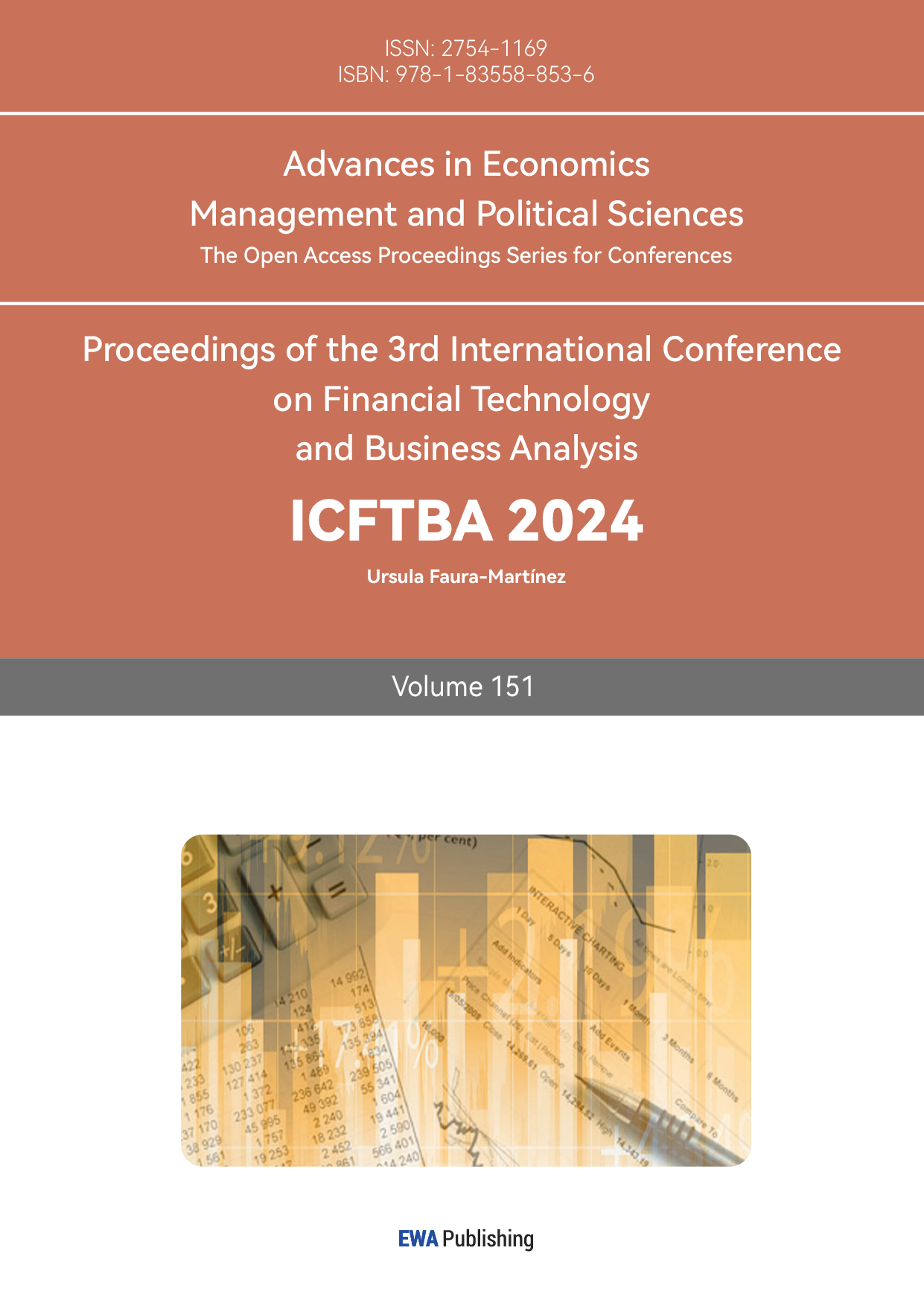1. Introduction
The luxury goods industry has undergone significant changes in recent years, particularly in terms of digital transformation and the growing emphasis on sustainability. Although several studies have examined the market performance of luxury brands, gaps remain on how to remain competitive in a rapidly changing environment. This study focuses on Balenciaga, a well-known luxury brand, and aims to provide an in-depth analysis of its market strategies and challenges.
Specifically, this study will explore how Balenciaga responds to factors such as changes in consumer preferences, technological advancements, and economic fluctuations. To this end, methods such as STEEPLE analysis, Ansoff Matrix, and SWOT analysis are employed to comprehensively evaluate its market positioning and future development direction.
The importance of this study lies not only in providing strategic suggestions for Balenciaga, but also in offering a reference for other luxury brands facing similar challenges. By identifying potential problems and proposing solutions, this paper aims to provide valuable insights into the future development of the luxury industry [1].
2. STEEPLE Analysis
The external environment can affect all aspects of a business including what it wants to produce, how much to produce, where to produce and sell, and what resources to use. This is the importance of STEEPLE analysis for businesses [2].
Balenciaga, a luxury fashion brand renowned for its high-end, unique products, must pay close attention to social factors, as they play a significant role in its success. The brand relies on consumer perceptions of luxury and status, and it must stay relevant by appealing to changing consumer preferences and trends to maintain its market position.
From e-commerce platforms to digital marketing strategies, technology has had a major impact on the fashion industry. Balenciaga must continue to innovate and adapt to new technologies in order to reach its target audience and remain competitive in the market.
Economic factors such as inflation, exchange rates and consumer spending habits will affect Balenciaga's sales and profitability. Brands must understand economic trends and fluctuations in order to make informed business decisions and adjust pricing strategies accordingly.
As sustainability becomes an increasingly important issue in the fashion industry, Balenciaga must consider its impact on the environment and take steps to reduce its carbon footprint. This may involve ethically sourcing materials, reducing waste during production and implementing sustainable practices throughout the supply chain.
Political factors such as trade policy, tariffs, and regulations also impact Balenciaga’s business operations. The brand must stay informed of political developments that could impact its supply chains or distribution channels to mitigate potential risks.
Compliance with laws and regulations is critical to any business. Balenciaga must ensure compliance with labor laws, intellectual property rights and other legal requirements to avoid any potential legal issues that could harm its reputation or profits.
In addition to legal considerations, ethical factors such as fair labor practices, diversity and inclusion, and corporate social responsibility are becoming increasingly important to consumers. Balenciaga must demonstrate a commitment to ethical business practices to build trust with customers and maintain a positive brand image.
3. Ansoff’s Marix Analysis
The Ansoff Matrix provides a framework for analyzing potential strategies based on two key dimensions: products and markets. The significance of this tool in business strategy is underscored by the numerous studies and specialized articles dedicated to it. This concept continues to be perceived and understood as one of the most important tools for business development and market penetration. Numerous studies show that the use of Ansoff's matrix in business development is one of the effective variants that entrepreneurs successfully apply.[3]
Balenciaga can focus on increasing its market share in existing markets by targeting new customer segments or expanding its reach within current markets. This could involve launching new marketing campaigns, offering promotions, or enhancing customer loyalty programs to attract more customers and increase sales.
Besides, Balenciaga can introduce new products or product variations to cater to changing consumer preferences and trends. This could involve expanding its product line to include accessories, footwear, or activewear, as well as collaborating with influencers or other brands to create limited-edition collections that appeal to a wider audience.
Moreover, Balenciaga can explore opportunities to enter new markets geographically or demographically. This could involve expanding into emerging markets in Asia or Latin America, opening flagship stores in key cities around the world, or targeting specific customer segments such as millennials.
Furthermore, Balenciaga can consider diversifying its business by entering new industries or offering new services that complement its core fashion business. This could involve launching a beauty line, entering the homeware market, or expanding into the luxury travel sector to capitalize on the growing demand for experiential luxury among affluent consumers.
4. SWOT Analysis
The use of SWOT analysis remains prevalent in the academic peer-reviewed literature, with research supporting its effectiveness as a planning tool. Over the past decade, SWOT research has focused on analyzing organizations for recommended strategic actions. As a methodology for strategic positioning, SWOT analysis has been extended beyond companies to countries and industries and is used in virtually every published business case positioned for business student analysis. Additional use of SWOT serves as teaching tools for consultants, trainers and educators as shown in figure 1[4,5].
This paper provides a summary of existing research studies and suggests potential paths for future research.

Figure 1: SWOT
4.1. Strengths
Balenciaga is recognized as a leading luxury fashion brand with a distinct and innovative design aesthetic, which attracts a loyal customer base. Balenciaga often sets trends rather than follows them, positioning itself at the forefront of the fashion industry and appealing to fashion-forward consumers. Also, the brand offers a wide array of products, including ready-to-wear clothing, accessories, footwear, and bags, catering to various consumer needs.
4.2. Weaknesses
The premium pricing of Balenciaga products may limit accessibility for a broader audience, potentially alienating some consumer segments.
Compared to competitors like Louis Vuitton or Chanel, Balenciaga has fewer retail locations, which may restrict brand visibility and customer engagement. Some of Balenciaga's avant-garde designs have faced criticism for being too unconventional or impractical, which could deter mainstream consumers. The brand’s visibility often relies on celebrity endorsements and collaborations, thus making it vulnerable to shifts in public interest.
4.3. Opportunities
There is significant potential for growth by entering emerging markets such as Asia and South America where luxury consumption is on the rise. Increasing consumer demand for sustainability presents an opportunity for Balenciaga to enhance its eco-friendly initiatives and attract environmentally conscious customers. Leveraging digital platforms and social media can help Balenciaga reach younger audiences and enhance online sales channels. Introducing new product lines such as beauty or home goods can diversify revenue streams and appeal to a broader customer base.
4.4. Threats
The luxury fashion market is highly competitive, with numerous established brands vying for market share, which could impact Balenciaga’s sales. Besides, economic instability or recessions can lead to reduced consumer spending on luxury goods, which greatly affects overall sales performance.
5. Conclusions
This study has provided a comprehensive analysis of Balenciaga's market strategies and challenges within the rapidly evolving luxury goods industry. By employing STEEPLE analysis, Ansoff Matrix, and SWOT analysis, this paper explored how Balenciaga navigates changes in consumer preferences, technological advancements, and economic fluctuations. The findings indicate that Balenciaga is well-positioned to leverage its strong brand identity and innovative design approach to adapt to these external pressures. Specifically, the brand's commitment to sustainability and digital transformation aligns with current consumer expectations, enhancing its competitive edge.
However, this research also has limitations. While it offers valuable insights into Balenciaga's strategies, it primarily focuses on qualitative analyses without extensive quantitative data to support the conclusions. Future research could benefit from incorporating empirical data on sales performance, customer demographics, and market trends to provide a more robust evaluation of Balenciaga's effectiveness in implementing its strategies.
Additionally, future studies should explore the impact of emerging technologies such as artificial intelligence and augmented reality on luxury retailing. Investigating how these technologies can enhance customer experience and engagement may yield further strategic recommendations for Balenciaga and similar brands.
In conclusion, while this study addresses the research question regarding how Balenciaga responds to external factors affecting its competitiveness, there remains ample opportunity for further exploration. By addressing the identified shortcomings and focusing on emerging trends in technology and consumer behavior, future research can contribute significantly to understanding the dynamics of the luxury goods industry and offer actionable insights for brands striving to stand out and thrive in an ever-changing landscape.
References
[1]. Medori, D. and Steeple, D. (2000), "A framework for auditing and enhancing performance measurement systems", International Journal of Operations & Production Management, Vol. 20 No. 5, pp. 520-533.
[2]. Ali, W. (2019). STEEPLE ANALYSIS OF PROLONGED ENERGY CRISIS IN PAKISTAN AND WAY FORWARD TO ENERGY SECURITY. NDU Journal.
[3]. Ansoff Igor, Strategic Management, Palgrave Macmillan, New York, 2007;
[4]. Helms, M.M. and Nixon, J. (2010), "Exploring SWOT analysis – where are we now? A review of academic research from the last decade", Journal of Strategy and Management, Vol. 3 No. 3, pp. 215-251. https://doi.org/10.1108/17554251011064837
[5]. Xin Liu, Menghao Song, Chao Li, Guihua Hui, Jinyun Guo, Yongjun Jia & Heping Sun.(2024).Inversion method of deflection of the vertical based on SWOT wide-swath altimeter data.Geodesy and Geodynamics(04), 419-428.
Cite this article
Wang,Z. (2025). Research Topic in Law and Economics: Balenciaga. Advances in Economics, Management and Political Sciences,151,67-71.
Data availability
The datasets used and/or analyzed during the current study will be available from the authors upon reasonable request.
Disclaimer/Publisher's Note
The statements, opinions and data contained in all publications are solely those of the individual author(s) and contributor(s) and not of EWA Publishing and/or the editor(s). EWA Publishing and/or the editor(s) disclaim responsibility for any injury to people or property resulting from any ideas, methods, instructions or products referred to in the content.
About volume
Volume title: Proceedings of the 3rd International Conference on Financial Technology and Business Analysis
© 2024 by the author(s). Licensee EWA Publishing, Oxford, UK. This article is an open access article distributed under the terms and
conditions of the Creative Commons Attribution (CC BY) license. Authors who
publish this series agree to the following terms:
1. Authors retain copyright and grant the series right of first publication with the work simultaneously licensed under a Creative Commons
Attribution License that allows others to share the work with an acknowledgment of the work's authorship and initial publication in this
series.
2. Authors are able to enter into separate, additional contractual arrangements for the non-exclusive distribution of the series's published
version of the work (e.g., post it to an institutional repository or publish it in a book), with an acknowledgment of its initial
publication in this series.
3. Authors are permitted and encouraged to post their work online (e.g., in institutional repositories or on their website) prior to and
during the submission process, as it can lead to productive exchanges, as well as earlier and greater citation of published work (See
Open access policy for details).
References
[1]. Medori, D. and Steeple, D. (2000), "A framework for auditing and enhancing performance measurement systems", International Journal of Operations & Production Management, Vol. 20 No. 5, pp. 520-533.
[2]. Ali, W. (2019). STEEPLE ANALYSIS OF PROLONGED ENERGY CRISIS IN PAKISTAN AND WAY FORWARD TO ENERGY SECURITY. NDU Journal.
[3]. Ansoff Igor, Strategic Management, Palgrave Macmillan, New York, 2007;
[4]. Helms, M.M. and Nixon, J. (2010), "Exploring SWOT analysis – where are we now? A review of academic research from the last decade", Journal of Strategy and Management, Vol. 3 No. 3, pp. 215-251. https://doi.org/10.1108/17554251011064837
[5]. Xin Liu, Menghao Song, Chao Li, Guihua Hui, Jinyun Guo, Yongjun Jia & Heping Sun.(2024).Inversion method of deflection of the vertical based on SWOT wide-swath altimeter data.Geodesy and Geodynamics(04), 419-428.









